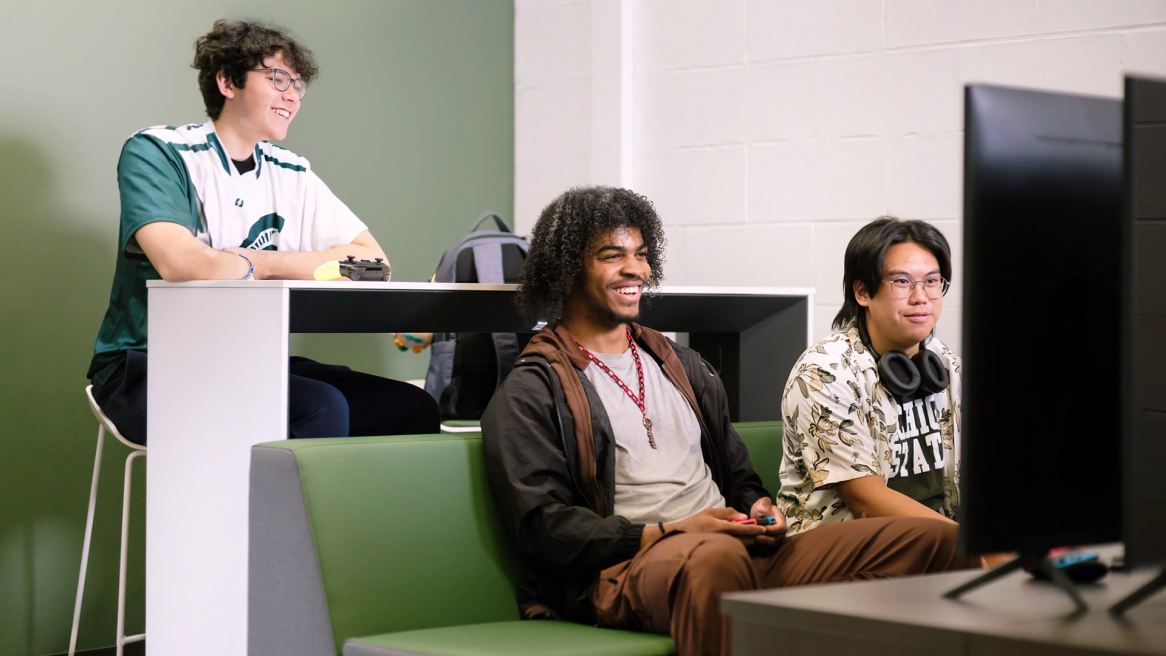Gathering to Game
Inside the innovative esports lounge at Michigan State University
Step inside the Esports Competition Hub at Michigan State University and you’ll discover a bustling space filled with students from a variety of backgrounds who all share one thing in common: a love for video games.
It’s where the school’s three varsity esports teams meet to practice and compete in matches against other Big Ten schools. It’s also home to the MSU Esports Club Association, whose 2,000-student roster makes it one of the school’s largest student organizations. You’ll see students interviewing athletes and streaming matches as a way to explore potential career paths. Most importantly, you’ll find young people gathering to game, study and be part of a community.
“We’re committed to esports as more than just competition. One of the biggest goals we were trying to accomplish with this space was to create a place for students to connect, to find others with similar interests and passions,” says Christopher Bilski, director of esports at Michigan State. “You can come here and instantly find a family, find a home you’re a part of. Having spaces here to provide that support has been a very powerful force in our students’ lives.”
The gaming hub has quickly become a haven for digital athletes and students across campus. Whether they’re coming for the competition, work experience or companionship, Bilski says students only need to bring one thing: themselves.
When Bilski arrived at MSU, he found a rapidly growing group of digital athletes and student gamers who didn’t have a central space to congregate. The solution: an empty classroom inside of Hubbard Hall, a student dormitory on the east side of campus.
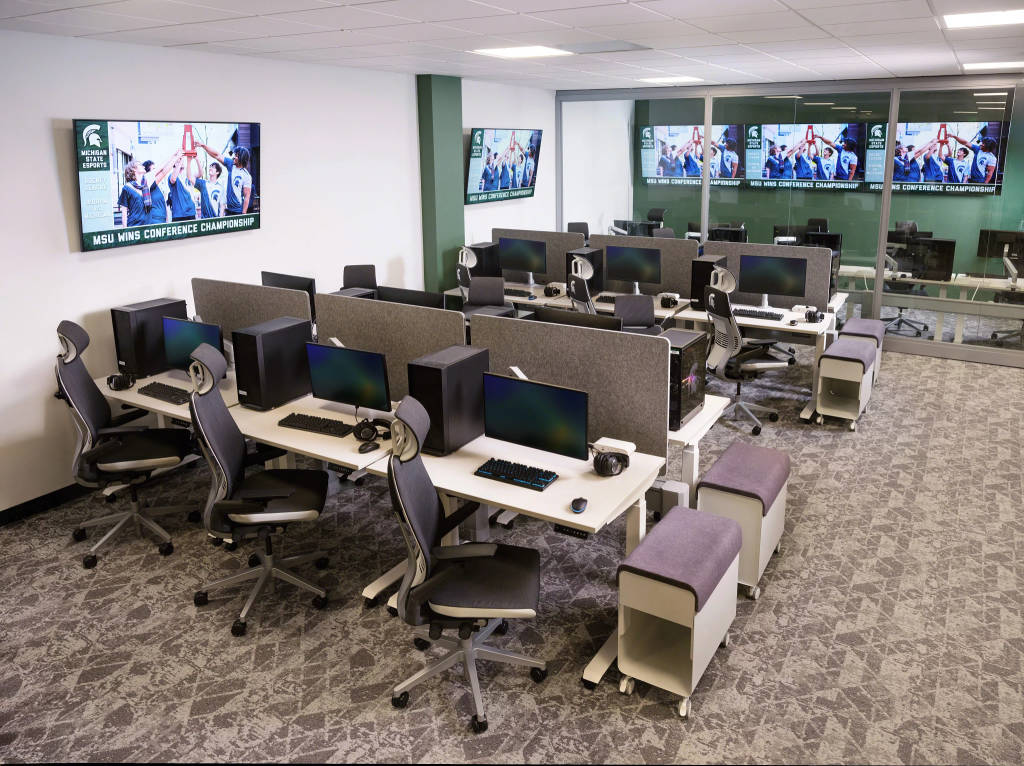
“Having a multi-functional, multi-purpose space was at the top of the list. I didn’t just want rows of computers or a dark room with lasers. I wanted a balanced and comfortable space, where students wanted to come and connect,” says Bilski.
Partnering with Steelcase, Bilski’s team selected furniture and equipment that would transform the former classroom into an innovative gaming hub. Battle stations were outfitted with work surfaces large enough to fit keyboards, peripherals and adjustable monitor equipment. Comfortable, ergonomic seating was added to support a variety of body types and postures during long hours of play.
“The things you may not be thinking about are all the little things that are happening while you’re gaming. Your posture, your hand and arm placement, the level of your monitors. All the little things that having the right equipment and furniture can support. Those go a long way when they add up. Students can be in front of a monitor gaming for hours, so having equipment that provides the right support can help keep their bodies safe and healthy,” says Bilski.
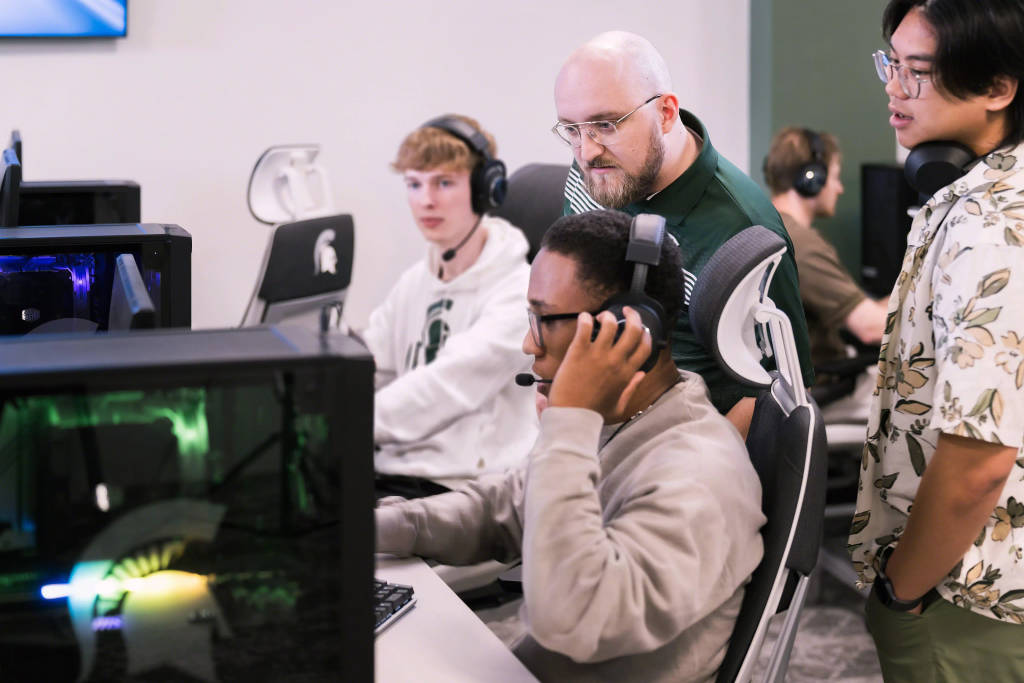
Couches, large tables and comfortable stools give students areas to hang out, connect, watch TV and study.
For student Kiley Slevin, the space gave her a place to make friends and explore her creative passions. “Esports has given me a support system. I found a community that not only loves activities that I like, but also is willing to uplift the creative aspects that I love in esports,” she says.
The hub also offers a film study and review room, so student athletes can learn and talk strategy with their coaches and discuss opponents’ play. A glassed-in competition booth provides sound dampening to limit distractions from cheering onlookers.
“When I saw this place for the first time, I thought it was a dream. It’s so much more comfortable with the chairs and monitors. When I play here I feel so much better,” says Rodrigo Arce, a student and esports athlete at MSU.
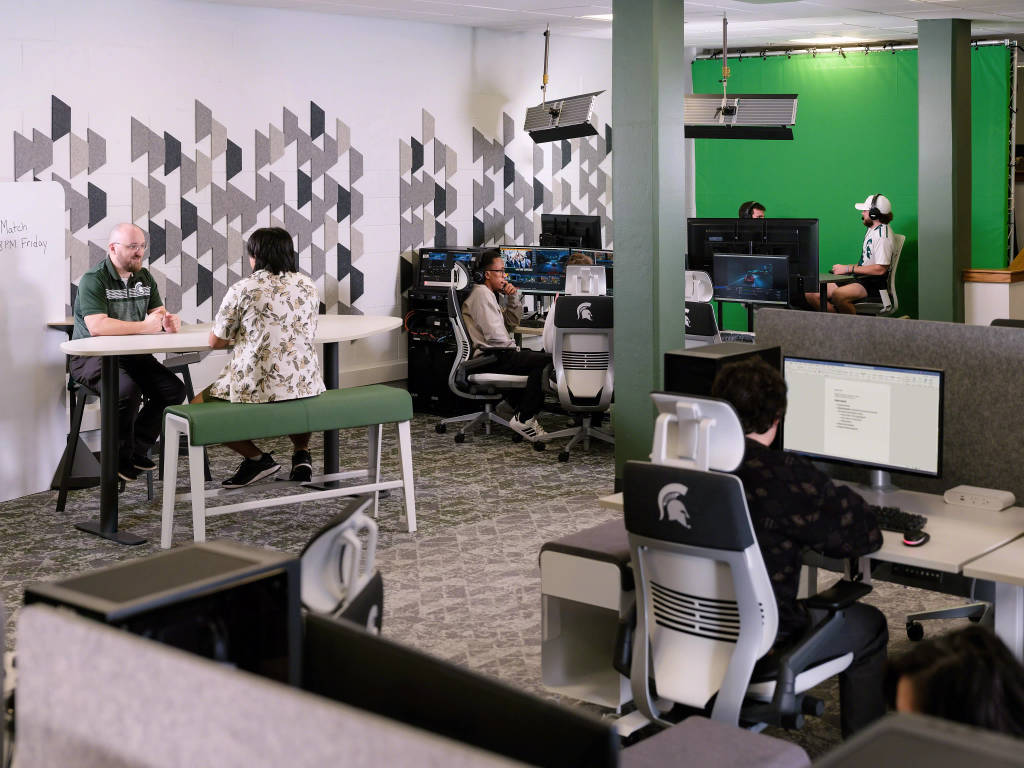
There’s also a heavy educational component to the esports program at MSU. As part of the College of Communication Arts and Sciences, students can explore professional interests, such as broadcast media, graphic design, photography and marketing, and participate in activities that start building their portfolios.
It’s not just about their four years here. It’s about the next 40 years of their life. We’re really excited about what this space helps to provide to our students, whether that’s from a community aspect, competitive aspect or career aspect
Christopher Bilski, Director of Esports, Michigan State University
The gaming hub’s broadcast studio gives students a place to execute every aspect of the competitions’ broadcast production. They promote upcoming matches on social media, provide live commentary during play, produce commercials, and conduct post-game interviews with athletes and coaches.
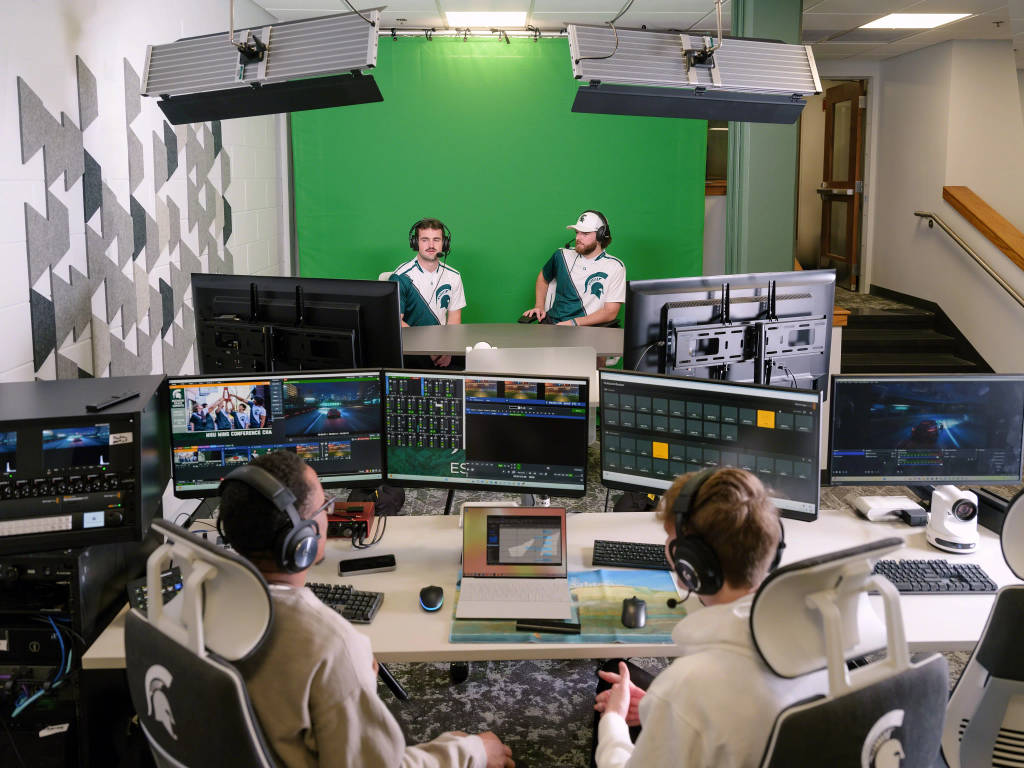
“I like that the space we have engages the competitive and fun aspect of the games but also the academics of MSU. It provides a space not only for students to practice but also a place for them to learn,” says Slevin.
“It’s been transformed into this vibrant space buzzing with energy and excitement. Come in, play, and meet new people. It doesn’t matter how much or little you’ve gamed in the past. We have a place for you,” says Bilski.
Learn more about our Steelcase Learning research on esports and the four essential considerations for creating optimally effective gaming spaces.

